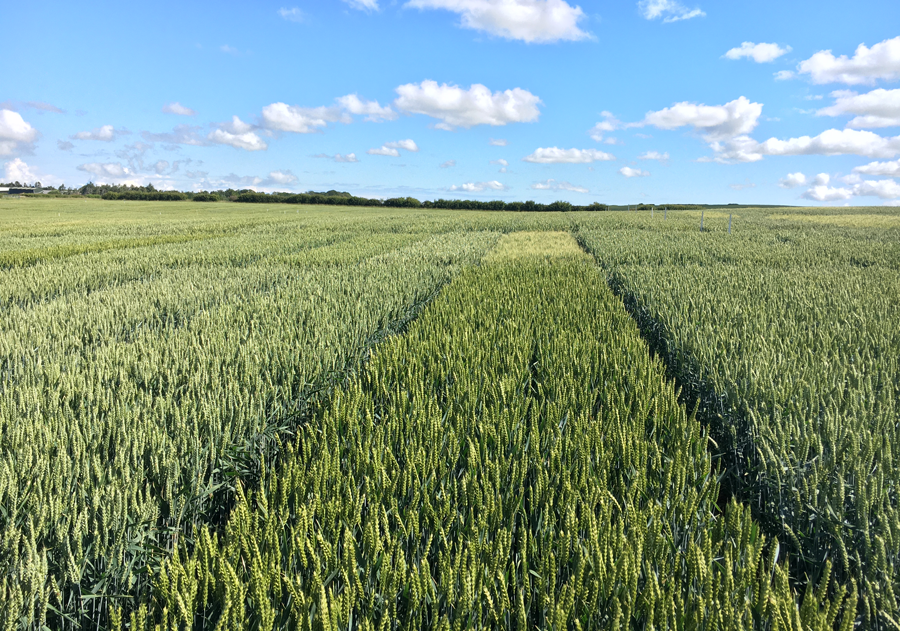Major changes in the latest cereals & oilseeds RL to meet complex agronomic challenges
3rd January 2021
Launched on 30th November 2020, AHDB’s online edition of the Recommended Lists for cereals and oilseeds (RL) 2021/22 features major changes to wheat rust disease-resistance ratings. Rachel Hicks reports.

RL and NL winter wheat trials (harvest 2020).
The annual AHDB RL launch was held via online webinar this year due to Covid-19 restrictions, although this didn’t hinder the data sharing.
Harvest 2020, however, was certainly hindered – with challenging conditions resulting in the loss of many trials. That said, the results gained have been insightful and, where limited data is available, this is indicated within the Lists.
One key point of note was in relation to a change in rust resistance ratings in wheat. Paul Gosling, who manages the RL at AHDB, explained that the reasoning behind the big changes to the rust ratings was to better reflect the levels seen by growers and agronomists in the field. “The wheat brown and yellow rust ratings are now weighted, so the most recent years’ results have the largest influence on the rating.
This approach makes the rating more sensitive to changes in rust populations, while still building on a valuable three-year data set.
“For wheat yellow rust and spring oat mildew, we have also changed the way we calculate disease ratings, relative to our susceptible and resistant variety fixed points. This ‘reset’ means, compared with the previous edition, the same amount of disease will result in a lower rating score.
For rust, some varieties have dropped by as much as three rating points. We stress this is largely due to the way we calculate the ratings, rather than an indication of a major shift in rust races in 2020.” He was keen to point out that, while some of the rust rating revisions may raise some eyebrows, for example in the case of KWS Zyatt and Skyfall, these changes are only due to how they are calculated – not because the disease resistance levels have changed in terms of susceptibility.
Winter wheat
New Group 3 biscuit wheat LG Prince combines a group-leading UK treated yield score (103 per cent of control varieties), with good disease resistance, though the lower specific weight of 74.8kg/hl may not suit everyone. Stablemate from Limagrain, LG Illuminate, is just behind on UK treated yield (102) and offers better specific weight, at 76.6, and a good disease package. Its earlier maturity (+1), good northern yield and distilling potential may attract northern growers. LG Quasar offers a similar package to LG Illuminate, with slightly lower quality, while LG Astronomer, though a little behind on yield, has a very good disease-resistance package, including a septoria tritici rating of 7.4, combined with a specific weight of 77.8. However, a mildew rating of 4 and North yield of 98 may limit its appeal.
The last of the new biscuit wheats is Merit from Elsoms, which is recommended for the East. Its yield in the East is especially good, and a Hagberg of 255 and specific weight of 76.5 will prove attractive. Its disease-resistance package is strong, and only let down slightly by a mildew rating of 3. All new soft Group 3s have resistance to OWBM.
The other new winter wheats are also interesting. KWS Cranium (hard Group 4) has good UK treated yield (104), a reasonable disease-resistance package and quality (Hagberg of 277 and specific weight of 75.4). However, it is its late-sown yield (sown after 1st November) of 108 that stands out.
Although based on a more limited data set, it will pique the interest of many growers, especially those with one eye on black-grass control.
KWS Cranium sets some important new standards in the Group 4 hard wheat sector including the best yield and yellow rust combination of all listed wheat varieties, says KWS’ Will Compson.
“It’s a great example of our Sowing for Peak Performance (SPP) work to future-proof varieties as much as we can.
“It’s a mainstream sower, but performs well in later drilling scenarios from mid- October onwards.
“Over five years of AHDB trials, KWS Cranium has shown exceptional consistency of yield in both first and second wheat slots and on light and heavy land across the UK and performed especially well in the Eastern region where the threat from yellow rust and OWBM is the greatest.”
Importantly, KWS Cranium adds seedling resistance to yellow rust to the hard Group 4 sector, he points out.
“Yellow rust can occur across the whole of the UK, with potential yield losses of up to 50 per cent often reported in untreated or susceptible wheat varieties.
“Avoiding high risk factors such as drilling susceptible varieties, sowing early and poor control of green bridges from previous crops are key, but the warmer, wetter winters we experience more of now are a largely unavoidable catalyst for the disease.”
According to Frontier seed manager Chris Piggott, with…
CONTINUE READING ON PAGE 12 OF FG JAN 2021 ISSUE – CLICK HERE TO READ ONLINE
